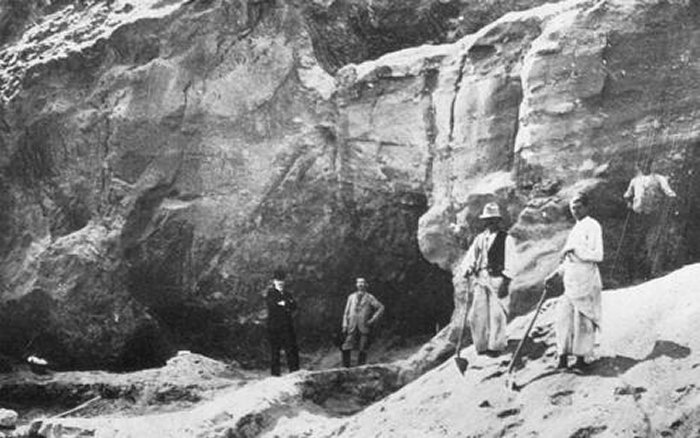Neanderthals Decorated Their Caves With Rocks 130,000 Years Ago – Find At Krapina Site Reveals
– Some would say, it’s just a piece of rock, but to a Neanderthal that lived 130,000 years ago, it was a precious item. He or she picked it up and decided to decorate a cave with this striped limestone rock.
“Symbolic items are seldom associated with Neanderthals and, when they are, many paleoanthropologists consider them to be Neanderthal imitations from modern Homo sapiens,” researchers write in in the journal Comptes Rendus Palevol.
Yet, there is evidence that Neanderthals did collect artifacts they considered valuable.

This limestone rock was discovered at the Croatian site of Krapina, where more than 1,000 lithic items has previously been found. Early humans collected rocks and Neanderthals were curious by nature and appreciated beauty.
David Frayer, Professor emeritus of anthropology from the University of Kansas and Davorka Radovcic of the Croatian Natural History Museum in Zagreb have analyzed the Krapina rock and concluded that the rock was never flaked or used as a tool.
“The object is roughly five inches long, four inches high and about a half-inch thick. Made of brown limestone, the rock features natural dark striations and a reddish hue on its corners. When wet, the stripes and redness become even more pronounced,” Seeker reports.
The rock was found and picked up just over a mile north of Krapina, where there are known outcroppings of this type of stone, or the Kraponica stream could have transported it closer to the cave site.
The Krapina site was excavated between 1899-1905 by Professor Dragutin Gorjanović-Kramberger, a well-known Croatian geologist, paleontologist and paleoanthropologist.
The place was occupied by Neanderthals during the Ice Age and it provides us with significant information about the evolution of mankind.
Over the years, 900 human fossils belonging to both male and female, from 2 to 40 years of age have been discovered at the site. The bones along with other unearthed artifacts shed light on the lives and beliefs of the Neanderthals.
“Along with other examples from sites in western and central Europe and the recent discovery of eight modified white-tailed eagle talons from Krapina, this unique item suggests that Neanderthals were capable, on their own, of incorporating symbolic objects into their culture, “researchers write in their paper.
It is worth keeping in mind that both humans and animals tend to collect items they find either of value or simply beautiful. Birds such as crows and ravens collect rocks. Male bowerbirds collect beautiful stones to attract females.
Previous research has also revealed that the Neanderthals and early humans from Europe and Asia collected teeth and used it as jewelry about 40,000 years ago.



 Creators of mankind
Creators of mankind Description of “Tall white aliens”
Description of “Tall white aliens” Where they came from?
Where they came from? About hostile civilizations
About hostile civilizations The war for the Earth
The war for the Earth “Tall white aliens” about eternal life
“Tall white aliens” about eternal life Video: “Nordic aliens”
Video: “Nordic aliens” Aliens
Aliens Alien encounters
Alien encounters The aliens base
The aliens base UFO
UFO Technology UFO
Technology UFO Underground civilization
Underground civilization Ancient alien artifacts
Ancient alien artifacts Military and UFO
Military and UFO Mysteries and hypotheses
Mysteries and hypotheses Scientific facts
Scientific facts


















